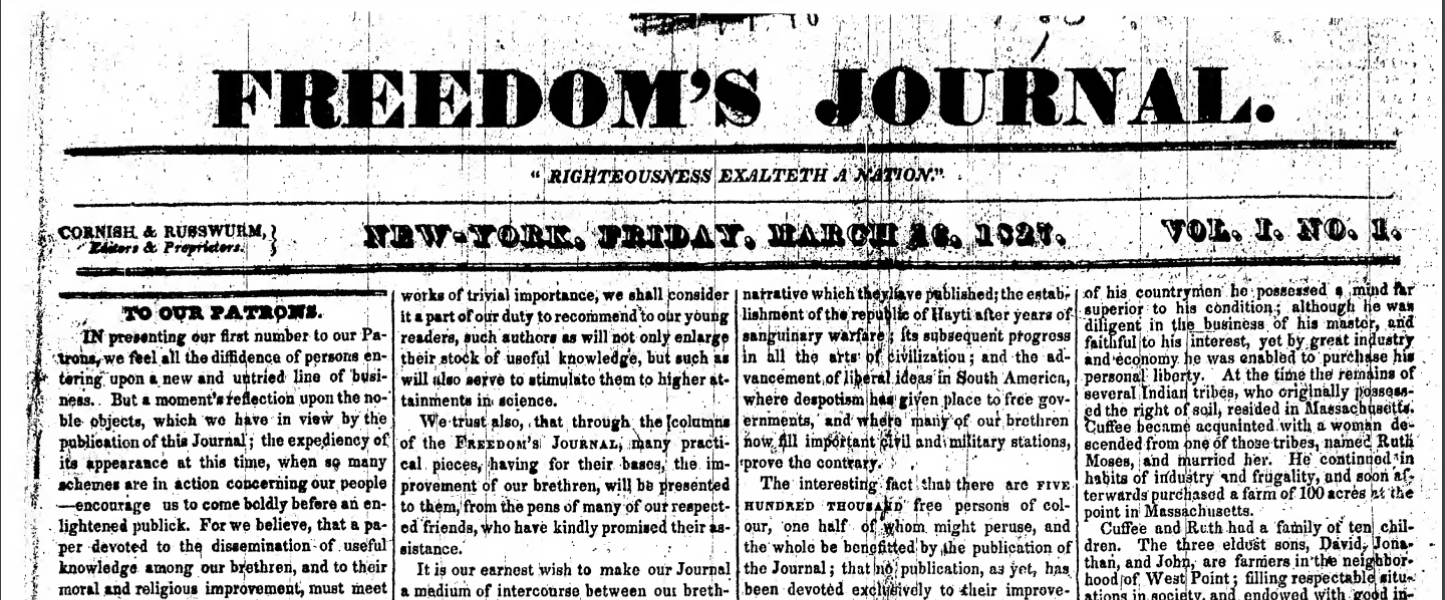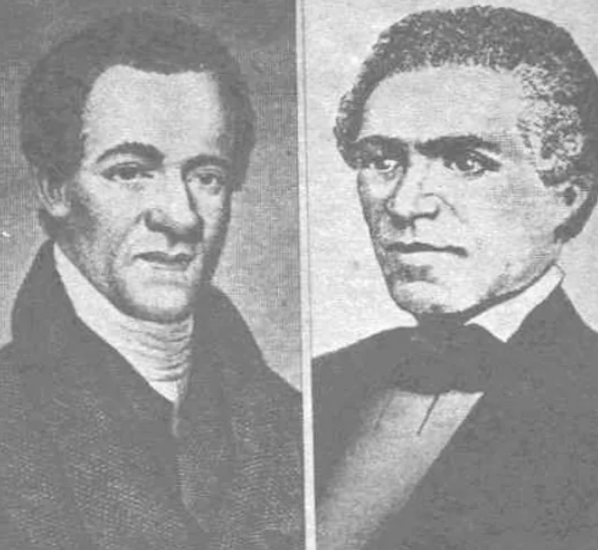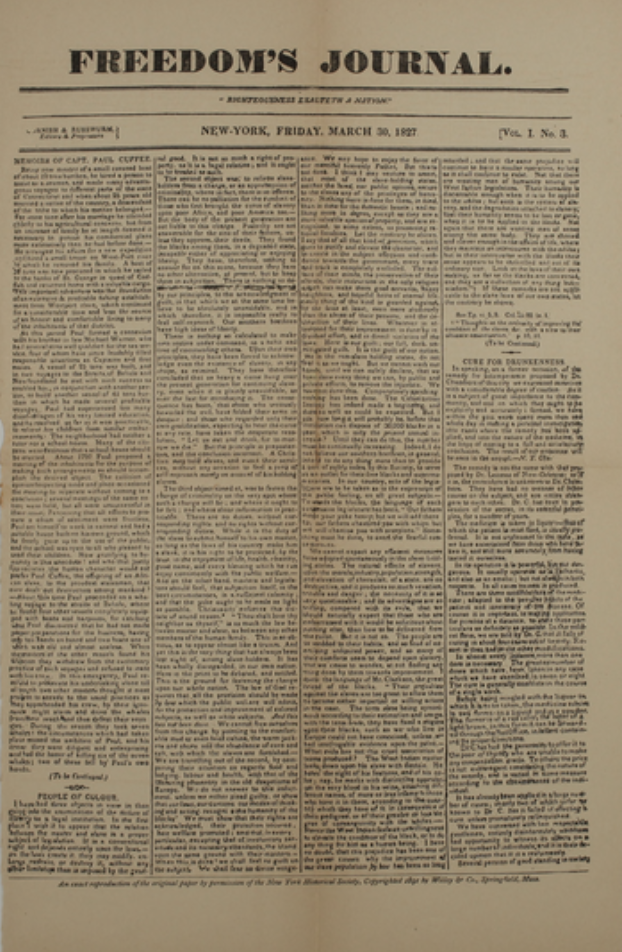Celebrating African American Contributions to Print: Freedom’s Journal
Print media has played a crucial role in shaping societies and disseminating knowledge to communities throughout history. We cannot even imagine a world without print.
When reflecting on African American contributions to print, one cannot overlook the groundbreaking achievement of Reverand Peter Williams, Jr. And William Hamilton, co-founders of The Freedom’s Journal, the first African American-founded newspaper, debuting in March 1827.
Rev. Peter Williams, Jr. and William Hamilton
The Conception of The Freedom Journal
Reverend Peter Williams, Jr. Was a prominent clergyman and activist in the African American community in the early 19th century. He recognized that education and communication held tremendous power over opportunity and knowledge. William Hamilton was a trailblazer in journalism and a successful businessman with a history in the printing industry. Together, Willaims and Hamilton made the perfect pairing to co-found The Freedom’s Journal. The pair’s determination to uplift the African American community and shared experience ensured the newspaper’s steady production and distribution, enabling it to reach a wide audience and create a lasting impact.
An Issue of The Freedom’s Journal, 1827
The Impact of Print on the African American Community
During the early 19th century, African Americans faced a variety of hardships and challenges, including limited access to education, restricted civil rights, and widespread discrimination. The founding of The Freedom’s Journal marked a monumental moment in history, as it allowed for printed media to be a vehicle for change and empowerment. Rev. Peter Williams, Jr. and William Hamilton recognized the need for a platform to voice the concerns, achievements, and aspirations of the African American community.
Legacy of The Freedom’s Journal
The Freedom’s Journal emerged as a powerful voice for African Americans, highlighting their achievements, addressing social issues, and challenging the prevailing racial prejudices of the time. It became a beacon of hope, fostering a sense of unity and community among African Americans across the nation.
The newspaper’s establishment was a watershed moment, paving the way for future African Americans who would contribute to newspapers, journalism, and other forms of print media. It demonstrated that African Americans could not only contribute to the field of print, but also shape public opinion and advocate for their rights.




